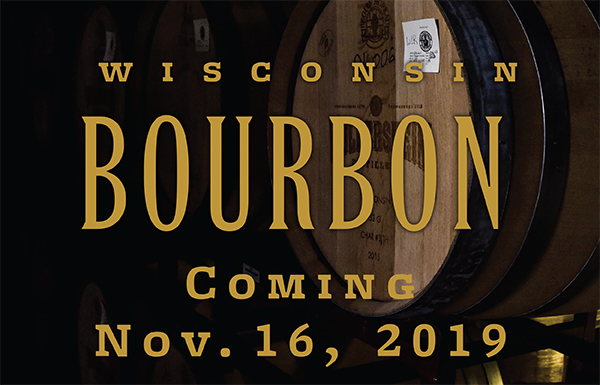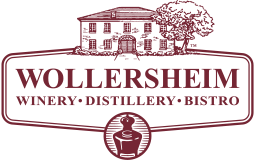Well, the time has finally come – almost. We are set to release Wisconsin Bourbon in just over two months on November 16th and we couldn’t be more excited.
With the addition of this new spirit to the Wollersheim Distillery lineup, we wanted to give it proper explanation and time to shine. What better way to do that than to create a three-part blog covering everything from what makes a Bourbon a Bourbon, to why we made ours the way we did? Enjoy!
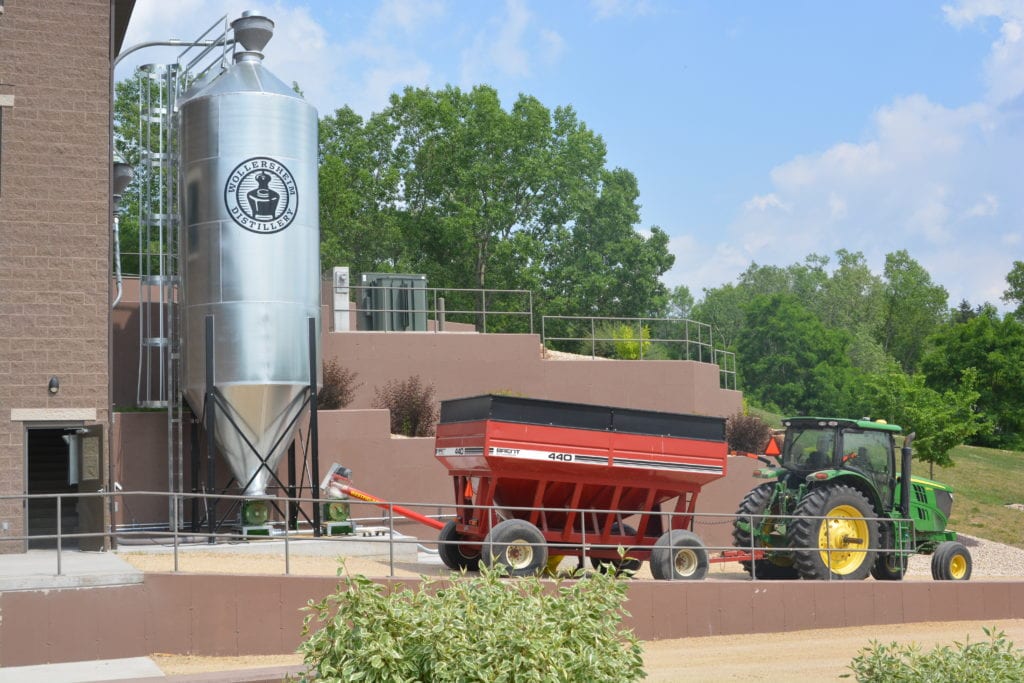
Grain being delivered from a local farmer to the Wollersheim Distillery silo.
When we sat down and thought about how to approach this, we decided the best thing to start with, as always, is the basics. So to begin, let’s start off by discussing what makes Bourbon unique to other spirits, particularly other whiskies.
The basic mantra of Bourbon is “all bourbon is whiskey, but not all whiskey is bourbon”. That either makes it really simple or really complicated, depending on how you look at it and how deep your background knowledge is in whiskey.
So let’s dive a bit deeper.
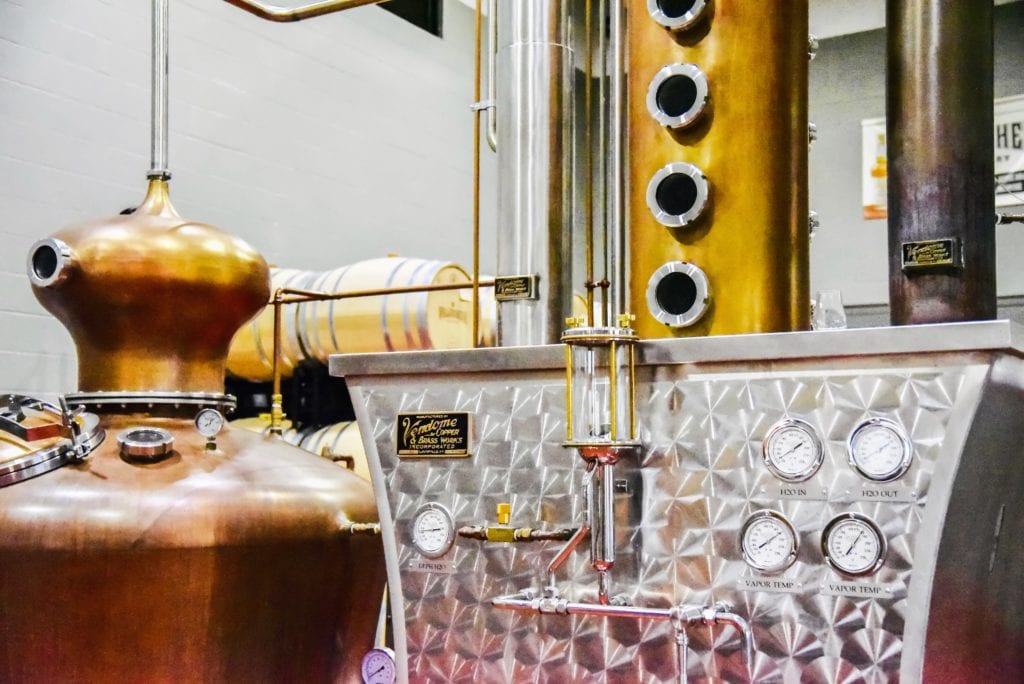
The Vendome Copper still where Wollersheim distills its Wisconsin Bourbon.
Bourbon is an alcoholic beverage that must be produced in America (anywhere in America, not just Kentucky) from at least 51% corn and aged in a new charred oak barrel. Bourbon has to enter the barrel at no higher than 125 proof and cannot enter the bottle at anything less than 80 proof. Bourbon also cannot have anything added to it other than water for proofing purposes.
Whiskey is a more general term than Bourbon, in that Whiskey is a type of distilled alcoholic beverage, but it can be made from a variety of fermented grains including corn, rye, wheat and barely. Whiskey, unlike Bourbon, can be aged in any type of cask, new or old, and there is no percentage requirement for the grains in the mash bill. Whiskey can also have color and flavor added, even though we wouldn’t do that here.
We believe in doing things as locally as possible, so when we needed corn we reached out to our neighbors at Indian Valley Farms, which sits just a mile down the road. They grew all types of corn for us until we settled on what we thought would make the best Bourbon around — that was white corn.
To shed some more light on the why and how of our Bourbon, we sat down with Distiller Tom to get the answers straight from the source.
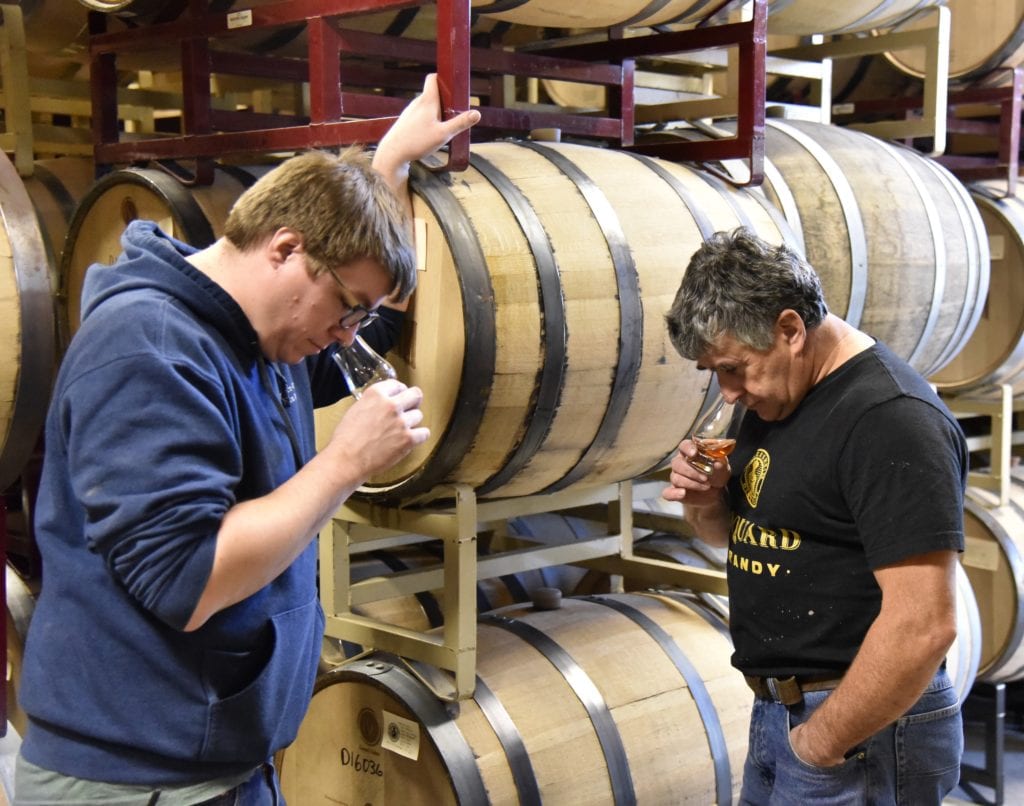
Distiller Tom (left) and his father-in-law and Wollersheim’s winemaker, Philippe (right), checking in on the aging Wisconsin Bourbon in Wollersheim’s barrel room.
Q: Why Bourbon?
A: For me it really is a personal connection. My dad’s drink of choice was always Bourbon, so when I went to purchase my first alcohol I think it’s just naturally what I gravitated towards. That’s really how Bourbon first grabbed me and it’s what I still love today. Then a while back when Philippe (Wollersheim’s Winemaker) was discussing all Wisconsin Brandy using Wisconsin grapes and Wisconsin Oak barrels in the spirit of French Cognac, I chimed in and said Wisconsin Bourbon would be even better, with a nudge. He responded by saying a few barrels would be fun to try, which is funny in hindsight considering we now have a few hundred.
Q: Why white corn?
A: We tried them all and simply put white corn was our favorite. We are always seeking balance in everything we make, and this corn was the best expression of that. It was familiar and was most definitely Bourbon, but it was also unique and had certain notes the other corn varietals just did not. It is also our way of giving a nod to the past. History runs deep at Wollersheim, and to tie this to the past white corn made a lot of sense, as white corn was common in pre-prohibition bourbons. The bourbon also has a higher malt percentage than you may typically find, and that is honoring that same historical method, while giving a nod to Wisconsin’s more well-known brewing tradition.
Q: Why source things locally for Bourbon?
A: Sourcing things at a hyper local level where you are getting fresh grains delivered by the farmer from a mile away gives you a sense of place. It comes back to the concept of terroir, which is taste of place. That idea really goes into everything we do here at the distillery and at Wollersheim as a whole. We wanted to create a Wisconsin Bourbon that was grown by Wisconsin farmers, distilled in Wisconsin, and aged in Wisconsin Oak barrels. By doing that you end up with a product that you can’t find anywhere but here in Wisconsin.

